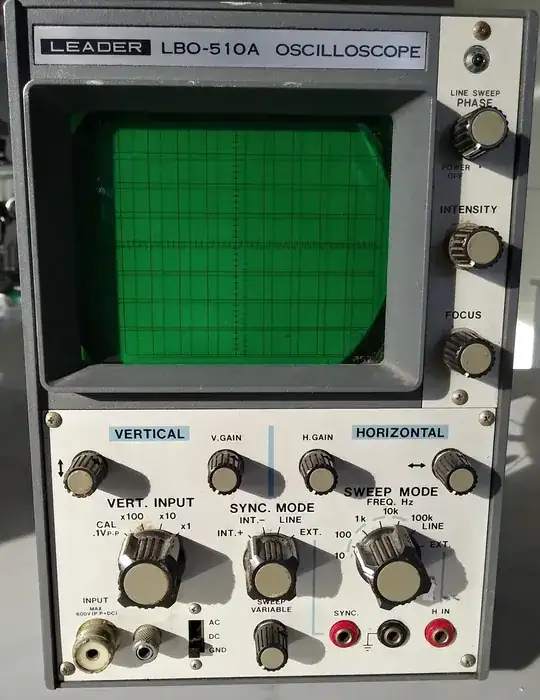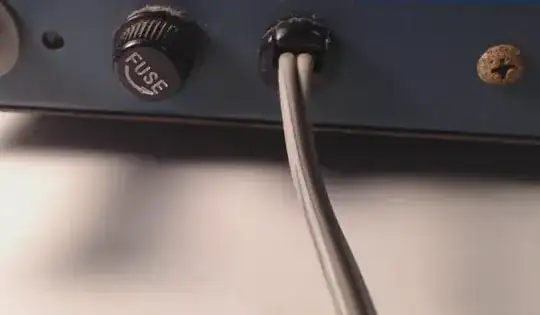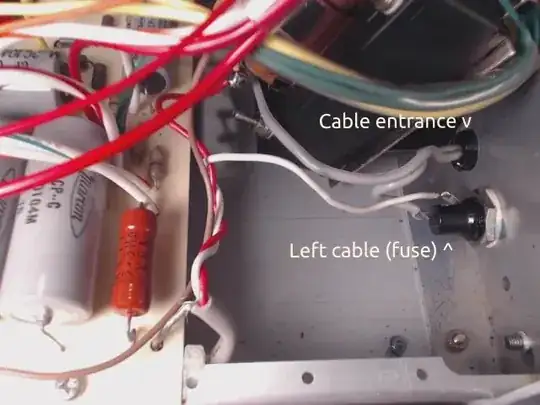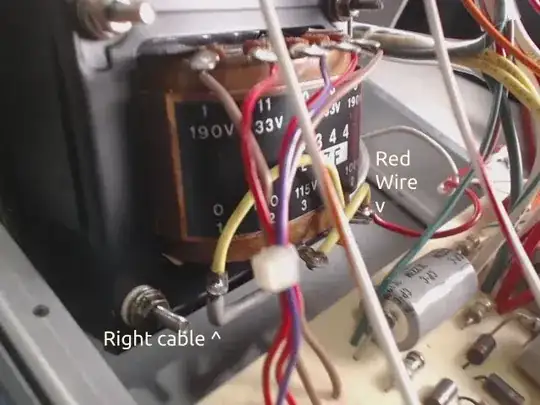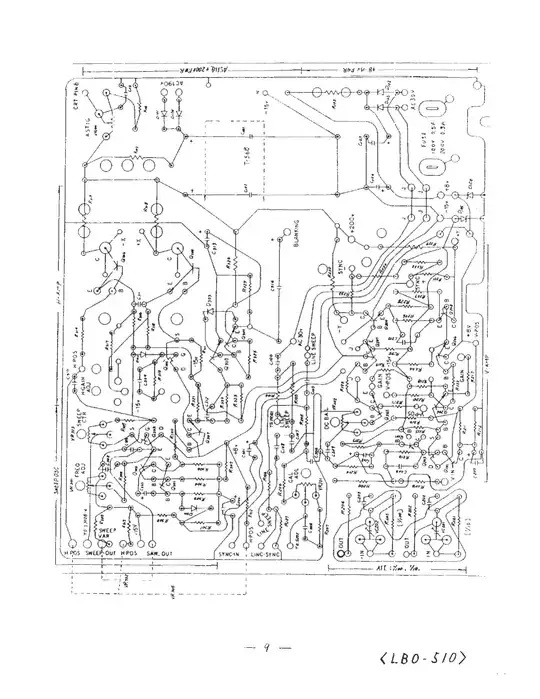I have an analogue oscilloscope that had its power cable head chewed off by something. Before I replace the cable, I want to be 100% sure which side of the cable is hot and which is neutral. This is for North America and the cable has no ground.
My understanding is that for North America, when facing an outlet the right side is hot leaving left as neutral. I'm assuming that devices would have their wires oriented that way, but I don't want to rely on that assumption.
One wire goes directly into a fuse, and the other into what I'm assuming is a rectifier. Both of those cables lead to the power switch, with the fuse line being white and the rectifier being red. Do the cable colors indicate which is hot?
There is a service manual online with a schematic, but I do not have the skills to read it. The manual is also for a different model, this is for the LBO-510A, and the schematic is for the LBO-510. I will discharge the CRT.
What can be taken from this information? In this case, what could happen if I get it wrong? Before I try anything I want to understand what risks could be involved, or other things a complete amateur would overlook.
